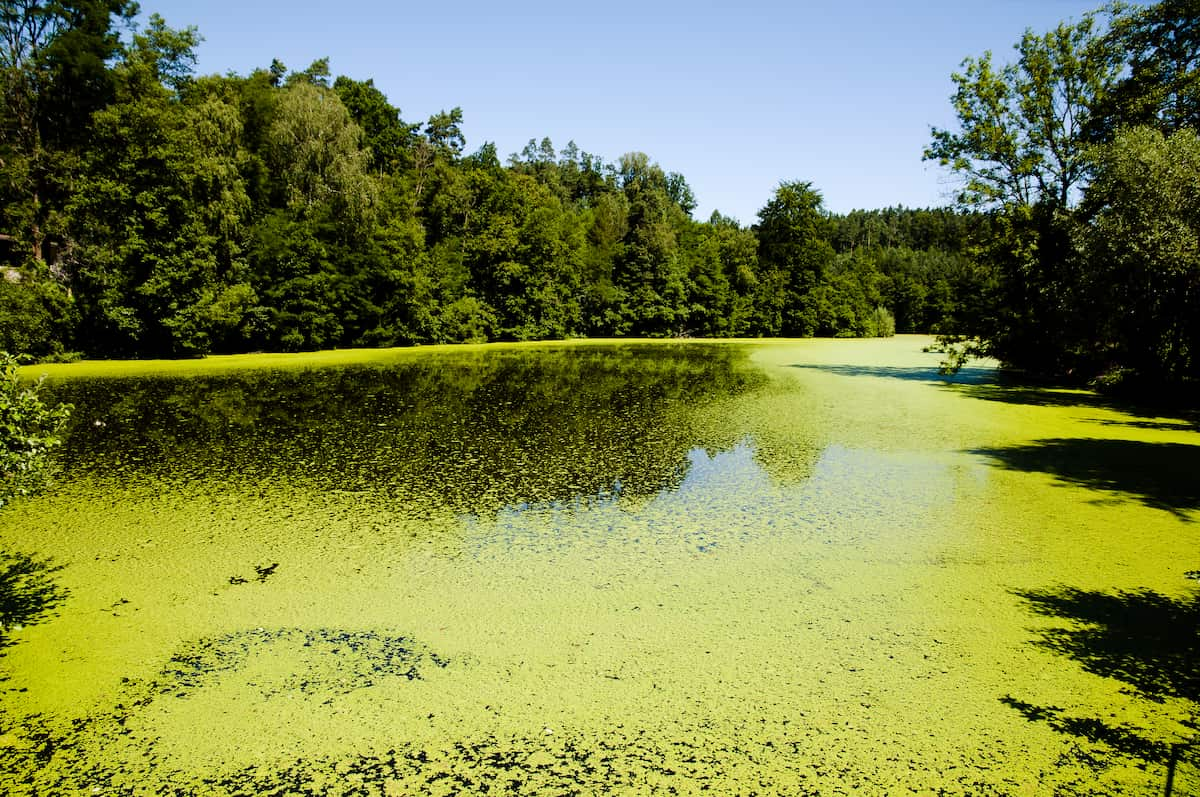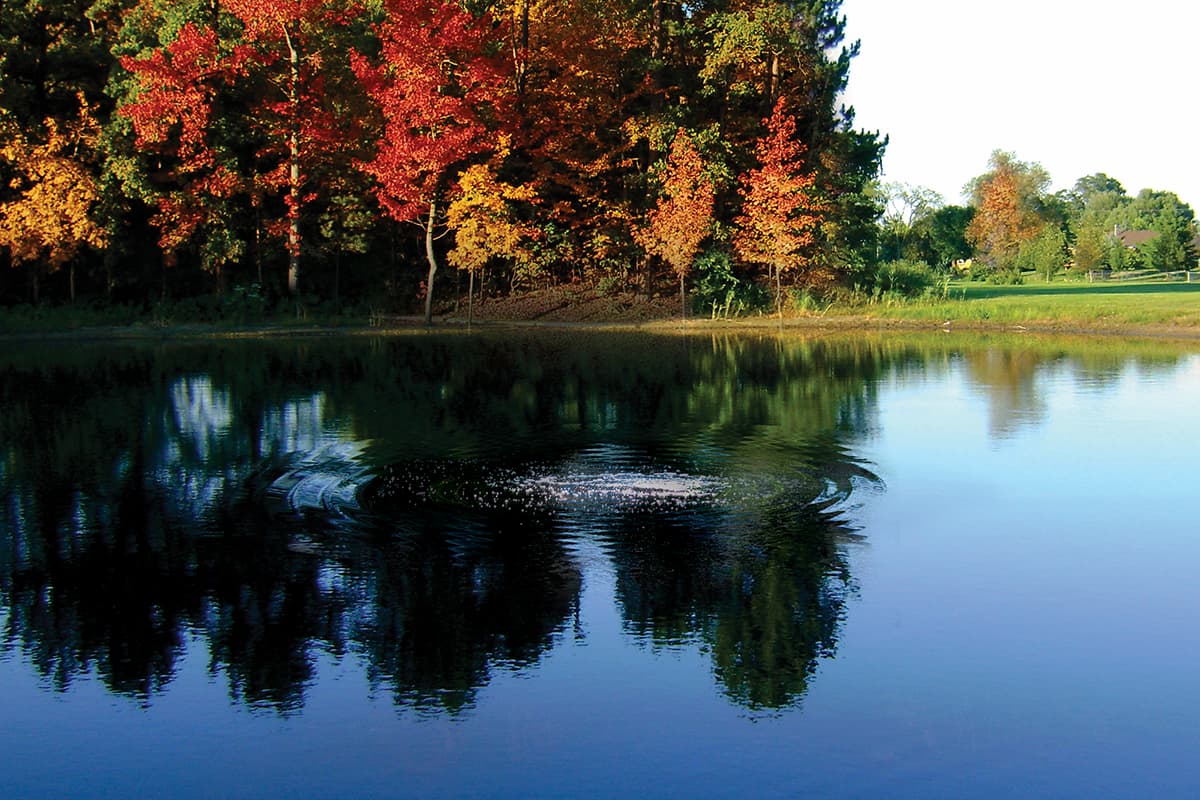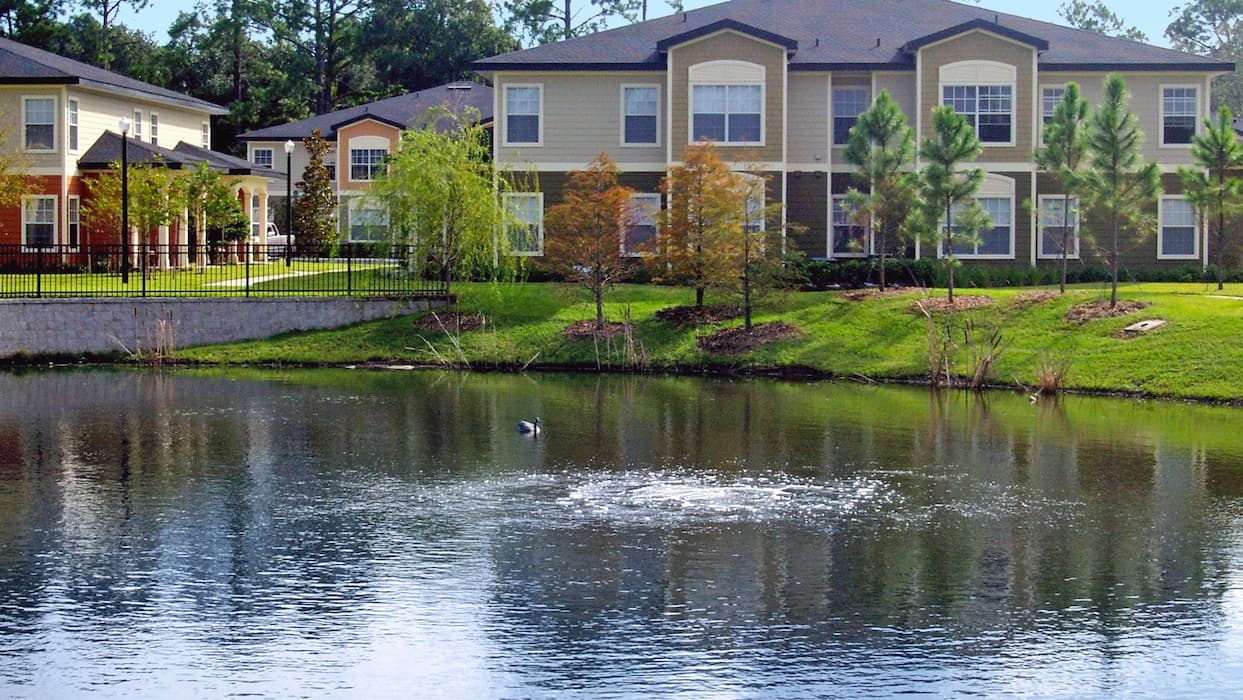
If you’re looking for how to get rid of algae in pond naturally, these methods focus on prevention and ecosystem balance.
Floating and submerged aquatic plants absorb excess nutrients and shade out algae. Choose:
These plants also provide shelter for fish and enhance pond aesthetics.
When decomposed, barley straw releases compounds that can inhibit algae growth. It’s a low-impact, long-term control method used in commercial lake algae control settings and backyard ponds alike.
Wondering what eats algae in a pond? Stocking your pond with the right species can help maintain balance:
These algae grazers reduce overgrowth and contribute to a more natural control strategy.
Many people search for what kills algae fast, but some products do more harm than good. Copper-based algaecides, for instance, are effective but can be dangerous in high concentrations — especially for koi or sensitive species.
Safer solutions include:
Always follow dosage guidelines carefully, and never apply treatments during the heat of the day or when oxygen levels are low.

For large properties — such as golf courses, HOAs, or estate homes — algae management requires more than just spot treatments. That’s where professional lake management services like Pond Guru come in.
Accurate algae identification (planktonic, filamentous, or cyanobacteria)
Custom treatment plans tailored to your pond’s volume, fish population, and use
Safe and effective tools including mechanical harvesters, targeted chemical use, and eco-restoration strategies
Ongoing monitoring and prevention programs to ensure long-term results
If you’ve been struggling with murky water, floating mats, or green scum, it’s time to take action — the right way. At Pond Guru, we specialize in commercial lake algae control and natural pond algae control solutions that protect your fish and restore beauty to your waterbody.
Schedule a site evaluation with our expert team to:
We proudly serve private homeowners, HOAs, golf courses, and property managers throughout the region. Let’s bring your pond back to life — without harming what’s in it.
Aeration, beneficial bacteria, and natural treatments like barley straw or low-impact algaecides can reduce algae safely.
Use aeration, aquatic plants, biological treatments, and introduce algae-eating fish where permitted.
Too much algae can deplete oxygen, especially during die-off, leading to fish stress or death. Some types (like blue-green algae) can also be toxic.
Fish like grass carp and tilapia, as well as snails and certain invertebrates, help control algae naturally.
A professional team like Pond Guru offers algae identification, safe treatment options, and long-term management plans to prevent regrowth.
If you’re managing a pond or lake, whether on a private estate, golf course, or HOA property, chances are you’ve noticed signs of poor water quality — algae blooms, fish stress, or murky water. One of the most effective ways to prevent and reverse these issues is by understanding the benefits of pond aeration.

In this article, we’ll cover how aerating a pond works, what a pond aerator does, and why professional aeration is a cornerstone of responsible pond maintenance. You’ll learn the top six reasons to aerate, how it protects water quality, and when to contact Pond Guru for a customized aeration consultation.
Let’s start with the basics — what is a pond aerator?
A pond aerator is a device that introduces oxygen into the water column by creating movement and surface agitation. This is typically done through:
So, what does a pond aerator do? It oxygenates the water, disrupts stratification, supports beneficial bacteria, and reduces the conditions that cause algae and foul odors.

One of the most noticeable pond aeration benefits is clearer, cleaner water. Aeration helps circulate nutrients throughout the pond, preventing them from building up in stagnant zones where they feed algae and weeds.
If you’ve been wondering how to improve pond clarity naturally, aeration should be your first step.
Excess nutrients and stagnant water lead to algae — but with proper aeration in pond systems, oxygen levels rise, nutrients are redistributed, and the natural balance of the pond is restored.
Aeration is one of the most effective ways to support algae control without relying heavily on chemical treatments.
Fish need dissolved oxygen to survive, and during the summer or after an algae bloom, oxygen levels can drop rapidly. Aeration systems provide a consistent oxygen supply throughout the pond, reducing stress and supporting fish populations.
This makes lake aeration benefits especially important for trophy fish lakes, stocked ponds, or HOA ponds with resident wildlife.

In summer, ponds naturally stratify — meaning warm, oxygen-rich water stays near the surface, while cold, anoxic (oxygen-poor) water sits at the bottom. This creates “dead zones” where organic matter accumulates and releases gases like methane and hydrogen sulfide.
With proper pond maintenance, including aeration, you can avoid costly dredging or foul odors later on.
Mosquitoes breed in still, shallow water. Aeration increases water movement, which makes it harder for mosquitoes to lay eggs and prevents larvae from developing.
This is especially important for properties where lake management services must also account for resident safety and comfort.
One of the greatest benefits of pond aeration is the reduction in long-term maintenance costs. Aeration supports the natural breakdown of nutrients and sludge, reducing the need for frequent herbicide or algaecide applications.
Over time, this means:
For property managers and HOA boards, this translates into a more attractive waterbody and fewer budget surprises.
At Pond Guru, we specialize in custom aeration design, installation, and maintenance for ponds and lakes of all sizes. Whether you’re managing a golf course water hazard or a 3-acre HOA retention pond, we’ll evaluate your waterbody and recommend the best aeration system for your goals.
If your pond has murky water, algae issues, or frequent fish kills, don’t wait. Aeration could be the solution you need — and we’ll guide you every step of the way.

It circulates water and adds oxygen to prevent algae, fish kills, and poor water quality.
Yes — even small backyard or HOA ponds benefit from added oxygen and movement.
Improved water clarity, healthier fish populations, reduced nutrient buildup, and better long-term management.
Aeration often reduces the need for herbicides or algaecides but works best as part of a complete pond maintenance plan.
Signs include algae blooms, murky water, fish gasping at the surface, or foul smells. Schedule a visit with Pond Guru to assess.